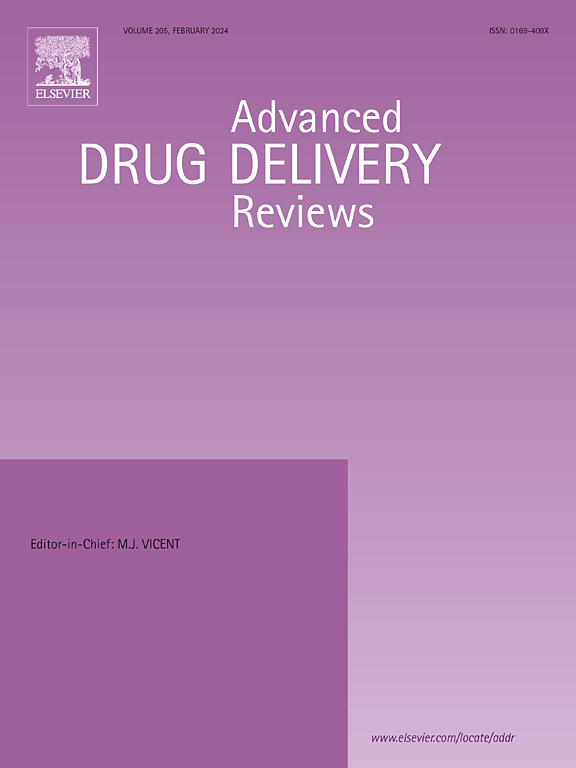Beyond the EPR effect: Intravital microscopy analysis of nanoparticle drug delivery to tumors
IF 17.6
1区 医学
Q1 PHARMACOLOGY & PHARMACY
引用次数: 0
Abstract
Delivery of nanoparticles (NPs) to solid tumors has long relied on enhanced permeability and retention (EPR) effect, involving permeation of NPs through a leaky vasculature with prolonged retention by reduced lymphatic drainage in tumor. Recent research studies and clinical data challenge EPR concept, revealing alternative pathways and approaches of NP delivery. The area was significantly impacted by the implementation of intravital optical microscopy, unraveling delivery mechanisms at cellular level in vivo. This review presents analysis of the reasons for EPR heterogeneity in tumors and describes non-EPR based concepts for drug delivery, which can supplement the current paradigm. One of the approaches is targeting tumor endothelium by NPs with subsequent intravascular drug release and gradient-driven drug transport to tumor interstitium. Others exploit various immune cells for tumor infiltration and breaking endothelial barriers. Finally, we discuss the involvement of active transcytosis through endothelial cells in NP delivery. This review aims to inspire further understanding of the process of NP extravasation in tumors and provide insights for developing next-generation nanomedicines with improved delivery.


超越EPR效应:纳米颗粒药物输送到肿瘤的活体显微镜分析
长期以来,纳米颗粒(NPs)向实体肿瘤的递送依赖于增强的渗透性和滞留(EPR)效应,包括NPs通过泄漏的脉管系统渗透,并通过肿瘤中淋巴引流减少而延长滞留时间。最近的研究和临床数据挑战EPR概念,揭示了NP递送的替代途径和方法。该区域受到活体光学显微镜的显著影响,揭示了体内细胞水平的递送机制。这篇综述分析了肿瘤中EPR异质性的原因,并描述了非EPR为基础的给药概念,可以补充目前的范式。其中一种方法是通过NPs靶向肿瘤内皮,随后在血管内释放药物并梯度驱动药物转运到肿瘤间质。另一些利用各种免疫细胞浸润肿瘤并打破内皮屏障。最后,我们讨论了通过内皮细胞的活跃胞吞作用在NP传递中的作用。本综述旨在进一步了解NP在肿瘤中的外渗过程,并为开发具有更好递送能力的下一代纳米药物提供见解
本文章由计算机程序翻译,如有差异,请以英文原文为准。
求助全文
约1分钟内获得全文
求助全文
来源期刊
CiteScore
28.10
自引率
5.00%
发文量
294
审稿时长
15.1 weeks
期刊介绍:
The aim of the Journal is to provide a forum for the critical analysis of advanced drug and gene delivery systems and their applications in human and veterinary medicine. The Journal has a broad scope, covering the key issues for effective drug and gene delivery, from administration to site-specific delivery.
In general, the Journal publishes review articles in a Theme Issue format. Each Theme Issue provides a comprehensive and critical examination of current and emerging research on the design and development of advanced drug and gene delivery systems and their application to experimental and clinical therapeutics. The goal is to illustrate the pivotal role of a multidisciplinary approach to modern drug delivery, encompassing the application of sound biological and physicochemical principles to the engineering of drug delivery systems to meet the therapeutic need at hand. Importantly the Editorial Team of ADDR asks that the authors effectively window the extensive volume of literature, pick the important contributions and explain their importance, produce a forward looking identification of the challenges facing the field and produce a Conclusions section with expert recommendations to address the issues.

 求助内容:
求助内容: 应助结果提醒方式:
应助结果提醒方式:


